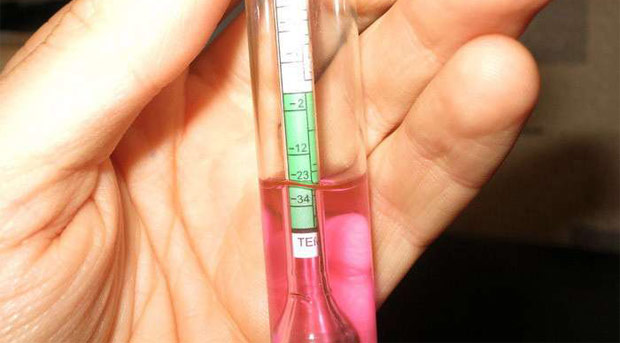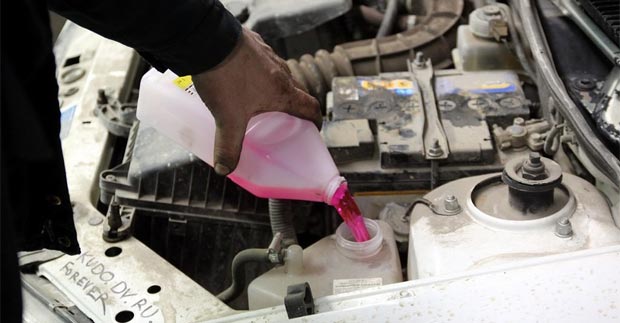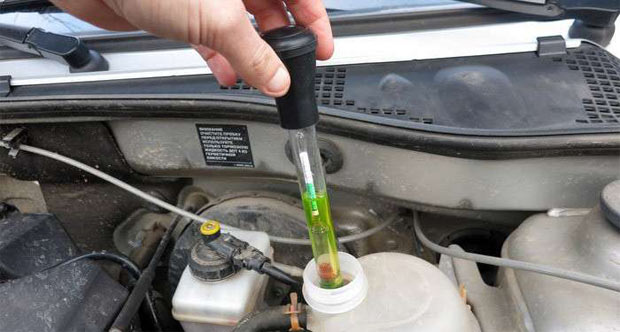
density of antifreeze. How is it related to freezing point?
Content
Density of antifreeze
Almost all modern antifreezes are made on the basis of alcohol (one of the variations of glycol) and distilled water. The ratio of glycol to water determines the resistance to low temperatures.
There is a paradox here that is important to understand. For ethylene glycol antifreezes, the rule does not work: the higher the concentration of glycol, the more frost the mixture can tolerate. Pure ethylene glycol has a freezing point of just -13°C. And such a high freezing threshold of the coolant is achieved by mixing with water.
Up to a concentration of glycol in the composition of approximately 67%, an improvement in low-temperature properties occurs. With this ratio, maximum resistance to freezing is achieved. Next comes a gradual shift of the pour point towards positive temperatures. There are tables that detail the properties of various concentrations of glycols and water.


The density of antifreeze does not depend on its color. As well as the freezing point. It doesn't matter if we study the density of green antifreeze, yellow or red, the resulting values \uXNUMXb\uXNUMXbwill not be correlated with color. The color rather determines the composition of the additives and the applicability of antifreeze for various cars. However, there is currently some confusion in this system. Therefore, it is impossible to focus solely on color.
At the moment, the most popular antifreezes are: G11, G12, G12 +, G12 ++ and G13. For all coolants, the density varies depending on the pour point (glycol concentration). For most modern coolants, this figure is around 1,070-1,072 g / cm3, which roughly corresponds to a freezing point of -40 °C. That is, antifreeze is heavier than water.


Device for measuring the density of antifreeze
The density of antifreeze can be measured with a conventional hydrometer. This is the most suitable device. You just need to find a version of the hydrometer, designed to measure the density of glycol mixtures.
The hydrometer consists of two main parts:
- flasks (with a rubber tip on one side and a pear on the other) for taking antifreeze inside;
- float with scale.


Inside the hydrometer, which is directly designed to measure the density of antifreeze, there is usually a hint insert. Not only the density is marked on it, but also the concentration of glycol corresponding to it. Some, more modified versions, immediately provide information on the freezing point of the antifreeze under study. This eliminates the need to independently search for values in the table and makes the procedure itself faster and more convenient.
How to measure the density of antifreeze at home?
The procedure for measuring with a hydrometer is quite simple. It is necessary to draw enough antifreeze into the flask from the canister or directly from the cooling system to float the float. Next, look at the float. The level to which it sinks will indicate the density. After measurement, it is enough to compare the density with the concentration of ethylene glycol, corresponding to this density, or with the pour point.


There is another way to measure density at home. This will require fairly accurate scales (you can use kitchen scales) and a container with a volume of exactly 1 liter. The density measurement procedure in this case will consist of the following steps:
- we weigh the empty container and record the result;
- pour exactly 1 liter of antifreeze into this container and carry out one more weighing;
- subtract the tare weight from the gross weight and get a net net of 1 liter of antifreeze;
This will be the density of antifreeze. The method can claim accuracy only if the scales are guaranteed to show the correct weight, and the container holds exactly 1 liter of liquid.


Watch this video on YouTube